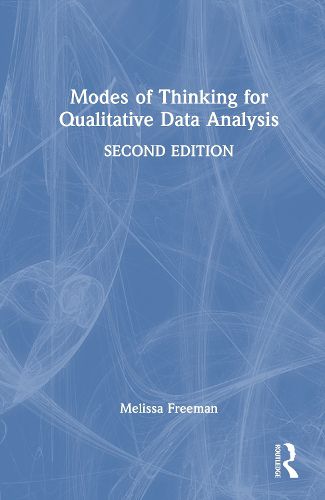Readings Newsletter
Become a Readings Member to make your shopping experience even easier.
Sign in or sign up for free!
You’re not far away from qualifying for FREE standard shipping within Australia
You’ve qualified for FREE standard shipping within Australia
The cart is loading…






Modes of Thinking for Qualitative Data Analysis offers a creative and comparative account of the conceptual and philosophical underpinnings of six prominent analytical movements used by interdisciplinary qualitative researchers: Categorical thinking, narrative thinking, dialectical thinking, poetic thinking, diffractive thinking, and decolonial thinking.
Each "mode of thinking" engages in a particular process for analytical sense-making. Every chapter describes core characteristics of the focal analytical movement along with examples to illustrate what that approach might look like in practice. By presenting these analytical movements in the space of a single text, the author not only highlights their unique contributions to qualitative analysis but also creates a structure from which to understand their strengths and challenges, as well as the kind of outcomes and realities each participates in shaping.
This book is a thought-provoking resource for experienced and novice interdisciplinary qualitative researchers seeking to deepen their understanding of the variety of ways qualitative analysis is, and could be, theorized and practiced.
$9.00 standard shipping within Australia
FREE standard shipping within Australia for orders over $100.00
Express & International shipping calculated at checkout
Modes of Thinking for Qualitative Data Analysis offers a creative and comparative account of the conceptual and philosophical underpinnings of six prominent analytical movements used by interdisciplinary qualitative researchers: Categorical thinking, narrative thinking, dialectical thinking, poetic thinking, diffractive thinking, and decolonial thinking.
Each "mode of thinking" engages in a particular process for analytical sense-making. Every chapter describes core characteristics of the focal analytical movement along with examples to illustrate what that approach might look like in practice. By presenting these analytical movements in the space of a single text, the author not only highlights their unique contributions to qualitative analysis but also creates a structure from which to understand their strengths and challenges, as well as the kind of outcomes and realities each participates in shaping.
This book is a thought-provoking resource for experienced and novice interdisciplinary qualitative researchers seeking to deepen their understanding of the variety of ways qualitative analysis is, and could be, theorized and practiced.